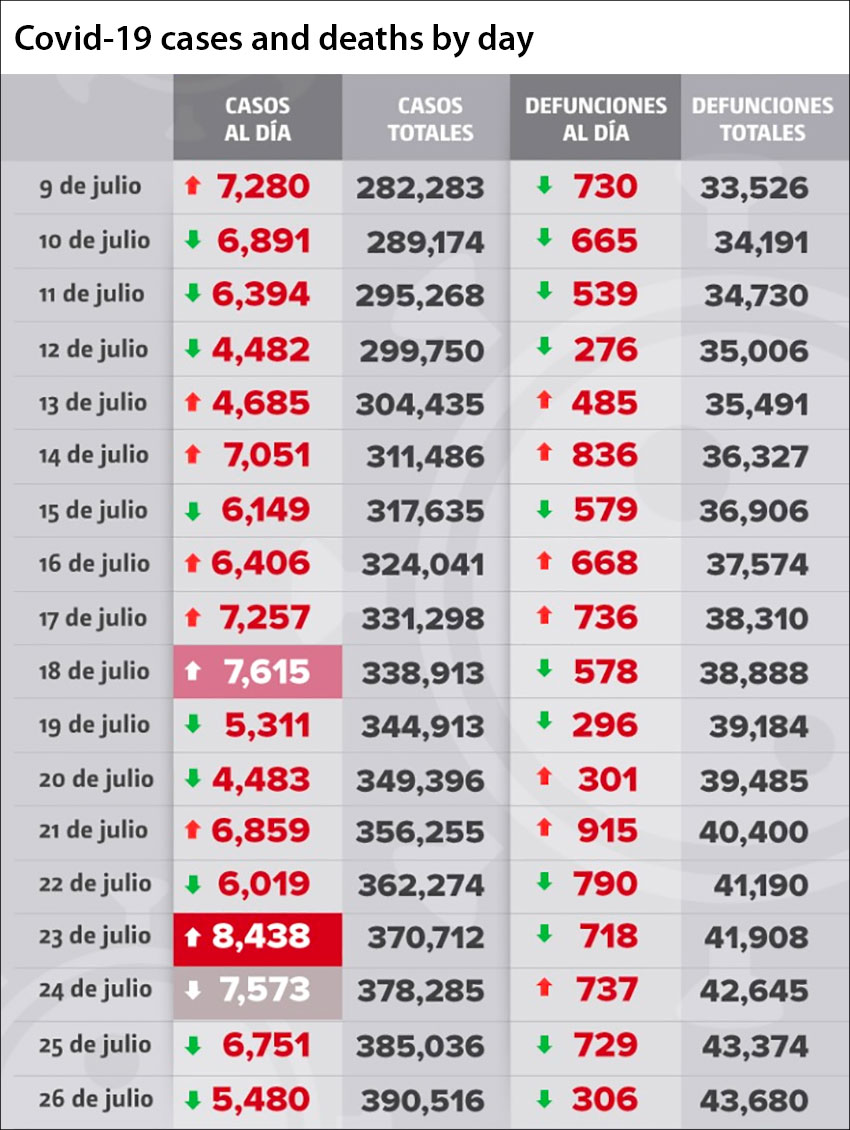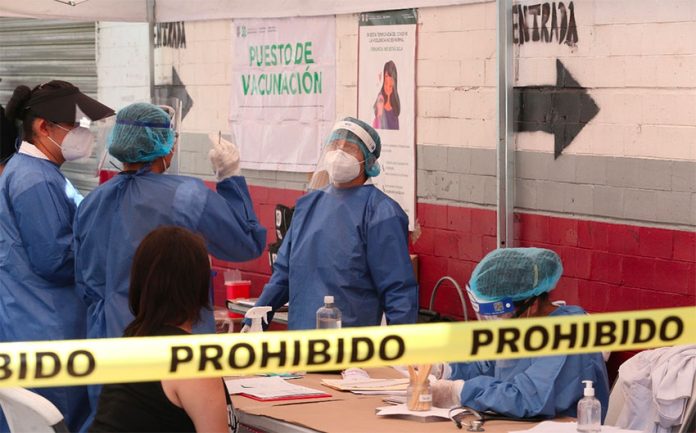Coronavirus case numbers will soon spike in three tourism-oriented states, predicts an analyst with a consultancy firm that specializes in data analysis.
José Carlos Rodríguez of Pondera Lab believes that Quintana Roo, Baja California Sur and Guerrero will see significant new outbreaks.
He told the newspaper El Universal that crowds of people are gathering in popular tourism destinations without observing social distancing recommendations and other measures to stop the spread of the virus.
“People are dropping their guard because of the [summer] vacations,” Rodríguez said.
The analyst said his calculations show that Guerrero hasn’t yet reached the peak of its coronavirus epidemic, an assertion supported by federal Health Ministry data that showed case numbers began to spike in the southern state in recent weeks.

Rodríguez added that Acapulco, the state’s largest city and most important tourist destination, was hit hard during the 2009 Swine flu pandemic due to its high population density, low levels of social security coverage among residents and high prevalence of existing health problems.
The Pacific coast resort city has also borne the brunt of Guerrero’s coronavirus epidemic, with more than half of the state’s almost 10,000 confirmed cases detected there.
Quintana Roo’s premier tourist destination, Cancún, has seen the highest number of confirmed cases in that state, while La Paz and Los Cabos have seen the biggest coronavirus outbreaks in Baja California Sur, where case numbers began to rise after restrictions were eased in June.
Guerrero is currently an “orange light” high risk state, according to the federal government’s infection risk “stoplight“ map, whereas Quintana Roo and Baja California Sur are “red light” states.
However, after federal authorities changed Quintana Roo’s risk level from orange to red on July 17, Governor Carlos Joaquín reiterated that his state has its own “stoplight” system and therefore wouldn’t respect that of federal authorities.
Rodríguez warned that hospital admissions of coronavirus patients will rise sharply in August and September if economic activities such as tourism are allowed to resume without the continuation of strict health rules.
National data presented Sunday night at the Health Ministry’s coronavirus press briefing showed that there is still plenty of space in Mexico’s hospitals even as case numbers continue to show steady growth.
The data showed that 47% of general care hospital beds set aside for coronavirus patients are currently occupied while 39% of those with ventilators are in use.
Nuevo León, Tabasco and Nayarit have the highest occupancy levels for general care beds, at 77%, 73% and 72%, respectively.
Nuevo Léon also has the highest occupancy rate for beds with ventilators, at 68%, followed by Tabasco and Puebla, where 66% and 55% of such beds, respectively, are in use.
Deputy Health Minister Hugo López-Gatell also reported that Mexico’s accumulated coronavirus case tally had increased to 390,516 with 5,480 new cases registered.
Mexico now has the sixth highest case tally in the world, according to data compiled by Johns Hopkins University, having passed Peru’s total over the weekend.
Mexico’s official death toll rose to 43,680 on Sunday – the fourth highest in the world – with 306 additional fatalities reported.
Of the confirmed cases, 31,812 are considered active, while there are 89,397 suspected cases across the country.
López-Gatell said that cases numbers declined for a second consecutive week in epidemiological week 29, which ran from July 12 to 18. He said it was the first time that case numbers had fallen in two consecutive weeks but stressed that there is no guarantee that the trend will continue.
Mexico City remains the country’s coronavirus epicenter, with almost 7,000 active cases, according to Health Ministry estimates.
México state has the second highest number of estimated active cases, with 4,660, followed by Nuevo León, with 3,972.
Mexico City also leads the country for confirmed accumulated cases and Covid-19 deaths with 68,903 of the former and 8,693 of the latter.
Authorities in the capital announced Sunday that 11 additional neighborhoods had been identified as coronavirus hotspots and will be given special attention aimed at reducing infections.
The hotspot neighborhoods are La Martinica in the borough of Álvaro Obregón; Portales Norte and San José Ticumac in Benito Juárez; Navidad and Ébano in Cuajimalpa; Año de Juárez and Barrio de Guadalupe in Iztapalapa; Pensiles in Miguel Hidalgo; El Arenal in Venustiano Carranza; and Selene and Apliación Selene in Tláhuac.
The Mexico City government previously identified 34 “red light” areas where health kiosks were set up to provide medical advice, carry out health checks and perform Covid-19 tests.
Six of those neighborhoods – Olivar del Conde segunda sección, Aldana, Guerrero, Lomas de San Lorenzo, Tlaxpana and San José Zacatepec – will be removed from the hotspot list due to a decline in case numbers.
Health workers performed 9,821 Covid-19 tests between July 15 and 25 in“red light” neighborhood health kiosks and provided medical advice to more than 80,000 people.
Source: Reforma (sp), El Universal (sp), Milenio (sp)
